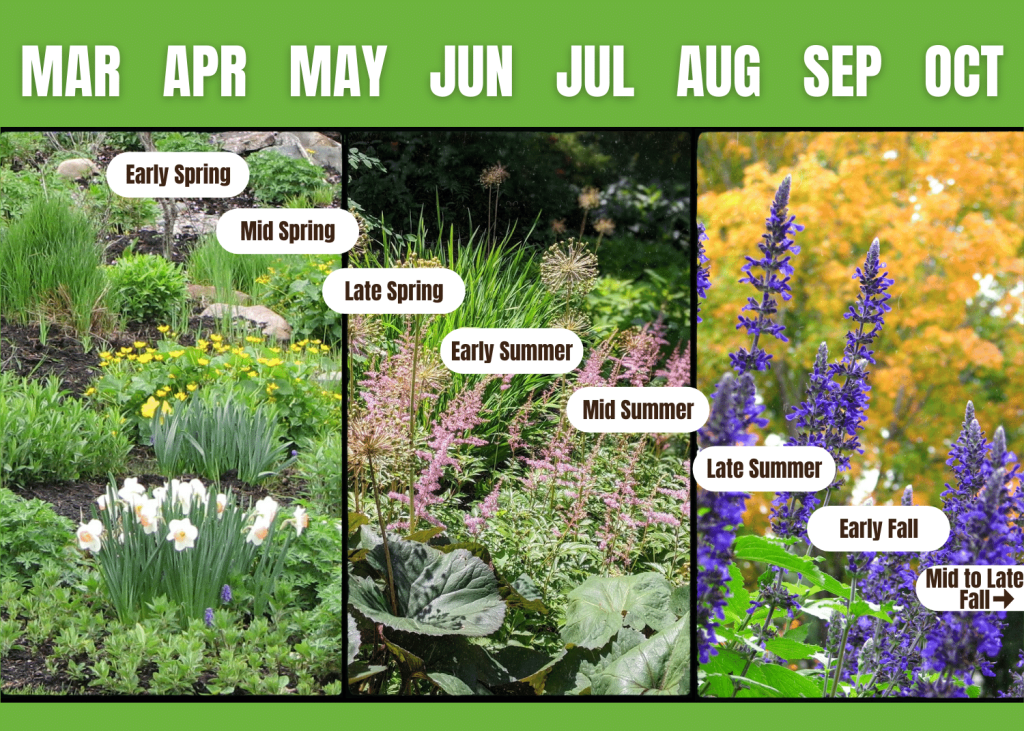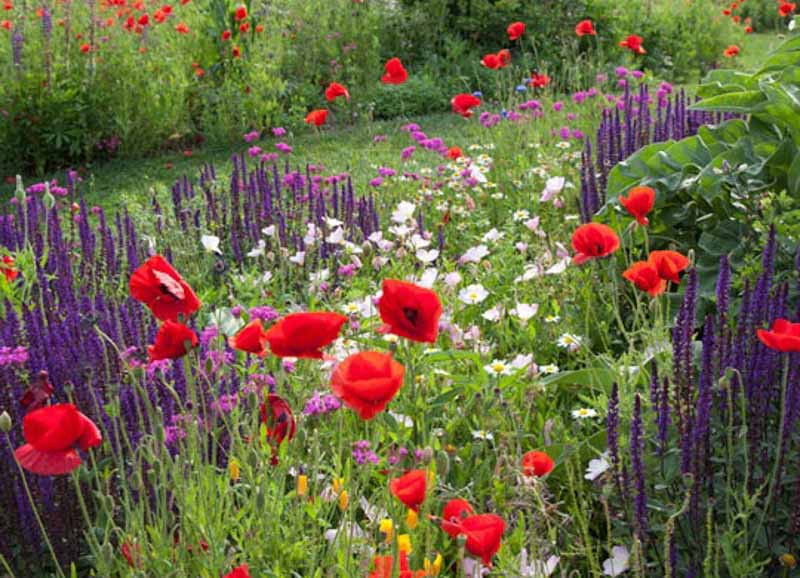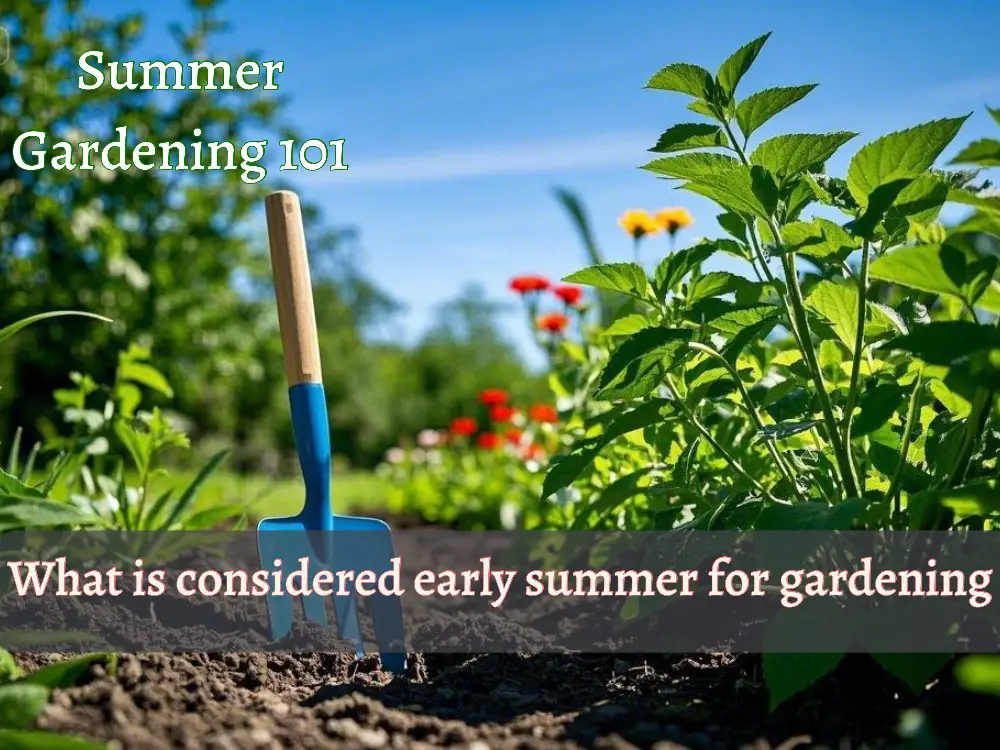Are you eager to see your garden burst into life as the seasons change? Understanding the timing of early summer can be your secret weapon for a thriving garden.
Imagine stepping into your outdoor space, greeted by vibrant blooms and lush greenery, all because you planted at just the right time. But when exactly does this magical period of early summer begin for gardeners? It’s not just about the calendar date; it’s about the perfect blend of warmth and daylight that your plants crave.
Stick with us as we uncover the nuances of early summer gardening, ensuring you have all the knowledge you need to make your garden the envy of the neighborhood. Ready to get your hands dirty and your garden thriving? Let’s dive in!
JUMP TO TOPIC
Defining Early Summer
Defining early summer for gardening is crucial for plant success. This period marks the transition from spring’s cool breezes to summer’s warm embrace. Understanding what early summer means helps gardeners plan and nurture their plants effectively.
Typical Timeframes
Early summer usually begins in late May or early June. It varies based on local climate conditions. This period lasts until mid-July. During this time, temperatures rise steadily, but not excessively. Days become longer, giving plants more sunlight to thrive.
Regional Variations
In warmer regions, early summer might arrive sooner. Areas like the southern United States see early summer in May. Colder regions experience it later. Northern climates may not see it until June. Each region’s unique climate affects the early summer timeline.
In coastal areas, early summer can be milder. Ocean breezes affect temperature and humidity levels. Inland regions may experience hotter early summers. Each gardener should consider their specific regional conditions.
Weather Patterns In Early Summer
Early summer is a crucial time for gardening. Understanding the weather patterns helps in planning and nurturing plants effectively. This period sees distinct changes in temperature and rainfall. Knowing these changes ensures gardeners can make informed decisions about planting and caring for their gardens. Let’s explore the key weather patterns gardeners should expect during early summer.
Temperature Trends
Temperatures in early summer begin to rise steadily. Days are warmer, encouraging plant growth. Nights may remain cooler, preventing heat stress in plants. It’s essential to monitor the temperature to avoid planting too soon. Sudden heat can impact newly planted seeds negatively. Adjust watering schedules to match the temperature changes.
Rainfall Expectations
Rainfall varies significantly during early summer. Some regions experience increased rainfall, aiding plant hydration. Others may face dry spells, requiring additional watering efforts. Understanding local rainfall patterns helps in planning garden activities. Installing rain gauges provides accurate data for irrigation needs. This ensures plants receive adequate moisture, promoting healthy growth.
Soil Preparation
Early summer is ideal for soil preparation in gardening. This period usually starts in late June. Prepare the soil by removing weeds and adding compost for nutrient-rich growth.
Preparing your garden soil in early summer is a crucial step for a successful gardening season. Good soil preparation ensures that your plants receive the nutrients they need and have the best chance to thrive. Whether you’re a seasoned gardener or new to this rewarding hobby, understanding how to test and amend your soil, along with effective mulching techniques, can make all the difference.Testing And Amending Soil
Start by testing your soil to determine its pH level and nutrient content. Kits are available at garden centers and provide you with the necessary information to make adjustments. Once you know your soil’s condition, you can amend it accordingly. Add lime to increase pH or sulfur to lower it, depending on your test results. Consider adding organic matter like compost or well-rotted manure. These amendments improve soil structure and fertility, creating an ideal growing environment.Mulching Techniques
Mulching is a fantastic way to protect and nourish your soil during early summer. It helps retain moisture, suppress weeds, and regulate soil temperature. Choose organic mulches like straw, wood chips, or shredded leaves. They break down over time, enriching the soil with nutrients. Apply mulch generously but avoid piling it against plant stems to prevent rot. A good rule of thumb is to spread a 2-3 inch layer around your plants. Have you ever mulched your garden and noticed healthier plants? That’s the magic of effective soil preparation. Experiment with different mulches and observe the impact on your garden. What will you try this summer to give your garden the best start?Planting In Early Summer
Early summer for gardening typically begins in late May and extends through June. This period offers warm temperatures ideal for planting vegetables and flowers. Gardeners can take advantage of longer daylight hours to nurture seedlings and ensure robust growth.
Planting in early summer can be an exhilarating time for gardeners. With the last frost behind you, the earth is ripe for sowing a variety of crops. This season brings a unique opportunity to plant certain vegetables, flowers, and herbs that thrive in the warm weather. ###Ideal Vegetables
Early summer is perfect for planting heat-loving vegetables. Tomatoes and peppers flourish in the warm soil, promising juicy fruits in the coming months. Cucumbers and zucchini also make excellent choices, as they grow rapidly in the sun. Have you tried planting green beans? They are remarkably easy to grow and can be harvested in just a couple of months. Sweet corn is another popular choice, offering a delicious reward come late summer. ###Optimal Flowers And Herbs
For those who love vibrant gardens, early summer is the time to plant marigolds and zinnias. These flowers not only add color but also deter pests naturally. Sunflowers can also be planted now, providing a stunning visual in any garden. When it comes to herbs, consider basil and cilantro. They thrive in the warmth and can elevate your culinary creations. Lavender and rosemary are also excellent choices, adding both fragrance and flavor to your garden. What will you plant this early summer? Consider these options and watch your garden flourish. Enjoy the process, and remember, each plant has its own story to tell in your garden’s journey.Pest And Disease Management
Early summer is a vital time for gardeners. Plants are growing fast, and pests start to appear. Managing these pests is crucial for a healthy garden. Diseases can spread quickly if not controlled. With the right strategies, you can protect your plants.
Common Early Summer Pests
In early summer, several pests become active. Aphids are tiny bugs that suck sap from plants. They can cause leaves to curl and stunt growth. Cutworms are another common pest. They cut through young plant stems overnight. Slugs and snails enjoy munching on leaves. They leave holes and trails of slime behind. Japanese beetles feast on flowers and leaves. They can defoliate plants rapidly.
Preventive Measures
Regular inspection of plants helps catch pests early. Look under leaves and check stems closely. Remove pests by hand if possible. Natural predators like ladybugs can help control aphids. Set up barriers to protect plants from cutworms. Use beer traps to attract and drown slugs. Neem oil is effective against many pests. It disrupts feeding and reproduction. Ensure plants are well-spaced for air circulation. This reduces the risk of disease spread. Rotate crops to prevent pest buildup in soil. Healthy plants resist pests and diseases better.

Credit: www.dripworks.com
Watering Strategies
Early summer in gardening typically begins in late May through June. It’s a crucial time for watering strategies. Plants need consistent moisture as temperatures rise and days lengthen.
As the days grow longer and the sun shines brighter, gardeners eagerly dive into early summer gardening. A key aspect of nurturing your garden during this period is mastering effective watering strategies. Watering is not just about keeping plants hydrated, but about doing so efficiently to promote healthy growth. With the right techniques, you can ensure your garden thrives while conserving water.Efficient Watering Techniques
Efficient watering involves more than just turning on the hose. It’s about delivering the right amount of water directly to the plant roots. Consider using drip irrigation systems or soaker hoses, which slowly release water to the base of your plants. This method reduces evaporation and ensures deep soil penetration. Timing matters too. Water your garden in the early morning or late afternoon. This prevents the water from evaporating too quickly in the midday sun. A friend once shared how they set a timer on their irrigation system to water at dawn. They noticed their plants were healthier and their water bill decreased.Signs Of Overwatering
Too much love can sometimes harm. Overwatering is a common mistake that can lead to root rot and other plant diseases. Look for signs such as yellowing leaves, wilting despite ample water, or a musty smell in the soil. These indicators suggest your plants are receiving more water than they need. A simple test to check if you’re overwatering is the finger test. Stick your finger about an inch into the soil. If it feels damp, skip watering for a day or two. Your plants will thank you for the break, and you’ll be fostering a healthier garden environment. Are you confident your watering habits are supporting your garden’s growth? Adjustments in your watering strategy can make a significant difference. Take the time to observe and adapt, ensuring your garden is vibrant and lush as early summer unfolds.Fertilizing Practices
Early summer in gardening refers to the period when temperatures begin to rise consistently. This is the ideal time for fertilizing practices, as plants are actively growing and can absorb nutrients effectively. Proper timing ensures lush, healthy gardens throughout the season.
Fertilizing Practices As the early summer sun begins to warm your garden, it’s the perfect time to think about fertilizing practices. Proper fertilization can mean the difference between a flourishing garden and one that struggles. Whether you’re nurturing your vegetables, flowers, or shrubs, understanding the right fertilizing techniques is crucial for healthy growth.Types Of Fertilizers
Choosing the right type of fertilizer can feel overwhelming with so many options available. Organic fertilizers like compost and manure improve soil structure and provide slow-release nutrients. Synthetic fertilizers offer immediate results with specific nutrient formulations for rapid growth. When selecting a fertilizer, consider the specific needs of your plants. A general-purpose fertilizer might work for most of your garden, but some plants, like tomatoes, may benefit from specialized blends. Reading labels carefully will help you make an informed choice.Application Timing
Timing is everything when it comes to fertilizing your garden. Early summer is ideal because plants are actively growing and can absorb nutrients effectively. Applying fertilizers too late can lead to wasted effort and potential harm to your plants as they prepare for dormancy. The best time of day to fertilize is in the morning or late afternoon. This avoids the midday heat, which can cause fertilizers to evaporate before being absorbed. Apply fertilizers after watering your plants to ensure the nutrients reach the root zone. Are you watching the weather forecast? Rain can wash away fertilizers before they penetrate the soil, so plan your application on dry days. Your garden will thank you with vibrant blooms and bountiful harvests.
Credit: www.growhausmn.com
Pruning And Maintenance
Early summer is a crucial time for garden care. Pruning and maintenance ensure healthy plant growth. Proper techniques help plants flourish during this season. Understanding when and how to prune is essential. Efficient maintenance keeps your garden vibrant and productive.
When To Prune
Timing is vital for pruning success. Early summer is ideal for most shrubs. Prune after spring blooms fade. This encourages new growth. Remove dead or damaged branches promptly. Regular checks prevent disease spread. Observe plant type for specific needs.
Tools And Techniques
Use the right tools for effective pruning. Sharp pruners make clean cuts. They reduce plant stress. Sterilize tools to prevent infection. Pruning saws handle thicker branches. Hand shears trim smaller stems. Always cut at an angle. This promotes water runoff.
Focus on removing weak or crossing branches. This improves air circulation. Enhances light penetration too. Avoid cutting too close to the main stem. Leave a small stub. This prevents damage to the plant. Consistent maintenance fosters a thriving garden.
Benefits Of Early Summer Gardening
Early summer for gardening usually starts in late May or early June. This time offers longer daylight and warmer soil. It provides an excellent opportunity for planting vegetables and flowers. These conditions help plants grow strong and healthy, ensuring a fruitful harvest.
Early summer is a magical time for gardening enthusiasts. As the season transitions from spring, the soil warms, inviting a plethora of plant possibilities. Embracing early summer gardening can offer numerous benefits, transforming your garden into a thriving paradise. ###Extended Harvest
Planting in early summer can extend your harvest period significantly. By sowing seeds or transplanting in this season, you give your plants ample time to mature before the intense heat of mid-summer. For instance, planting quick-growing crops like lettuce or radishes now can result in multiple harvests before the season ends. Imagine the joy of picking fresh produce from your garden when others have long run out. This strategy not only fills your kitchen with fresh flavors but also ensures a continuous supply of your favorite veggies. Have you ever considered the satisfaction of sharing your garden’s bounty with friends and family? ###Enhanced Garden Health
Gardening in early summer can bolster the health of your plants. Warmer soil temperatures promote faster germination and root growth, giving your plants a strong start. Additionally, early summer planting helps avoid some common pests that appear later in the season. By getting ahead, you reduce the risk of diseases that thrive in the peak heat. You might notice that your early summer garden seems more vibrant and less prone to pest damage. Isn’t it rewarding to see your plants flourishing with minimal intervention? Early summer gardening is not just about planting; it’s an opportunity to enrich your garden’s ecosystem. Are you ready to take advantage of this fruitful season and watch your garden thrive? Embrace the early summer sun and see the benefits unfold in your garden.
Credit: www.gardenia.net
Frequently Asked Questions
What Is Early Summer For Plants?
Early summer for plants is the period when they experience increased growth due to longer days and warmer temperatures. This phase typically occurs from late May to early July, depending on the climate. Plants use this time to bloom, produce seeds, and prepare for the hotter summer months.
What Is Considered Late Summer For Planting?
Late summer for planting typically refers to August and early September. Many crops thrive in cooler fall conditions. Choose fast-growing vegetables like spinach, radishes, or lettuce. Timing varies by region, so check local frost dates. Planting during this period ensures harvest before winter.
What Months Are Early To Mid Summer?
Early to mid-summer typically includes the months of June and July. These months offer warmer temperatures and longer daylight hours in many regions. Enjoy outdoor activities and vibrant natural beauty during this time.
What Is The Gardening 3 Year Rule?
The gardening 3-year rule suggests rotating crops every three years. This practice prevents soil depletion and reduces pest and disease buildup. Rotate different plant families to maintain soil health and improve yields.
Conclusion
Early summer offers a perfect time to start your gardening journey. Plants thrive with the gentle warmth and longer days. This season brings opportunities for growth and beauty. Prepare soil and choose the right plants. This ensures a flourishing garden.
Enjoy watching your garden transform. New blooms and greenery will reward your efforts. Remember to water and care for your plants regularly. Gardening in early summer is both relaxing and fulfilling. So, get your tools ready. Embrace the joys of early summer gardening today.
Your garden will thank you with vibrant life.

